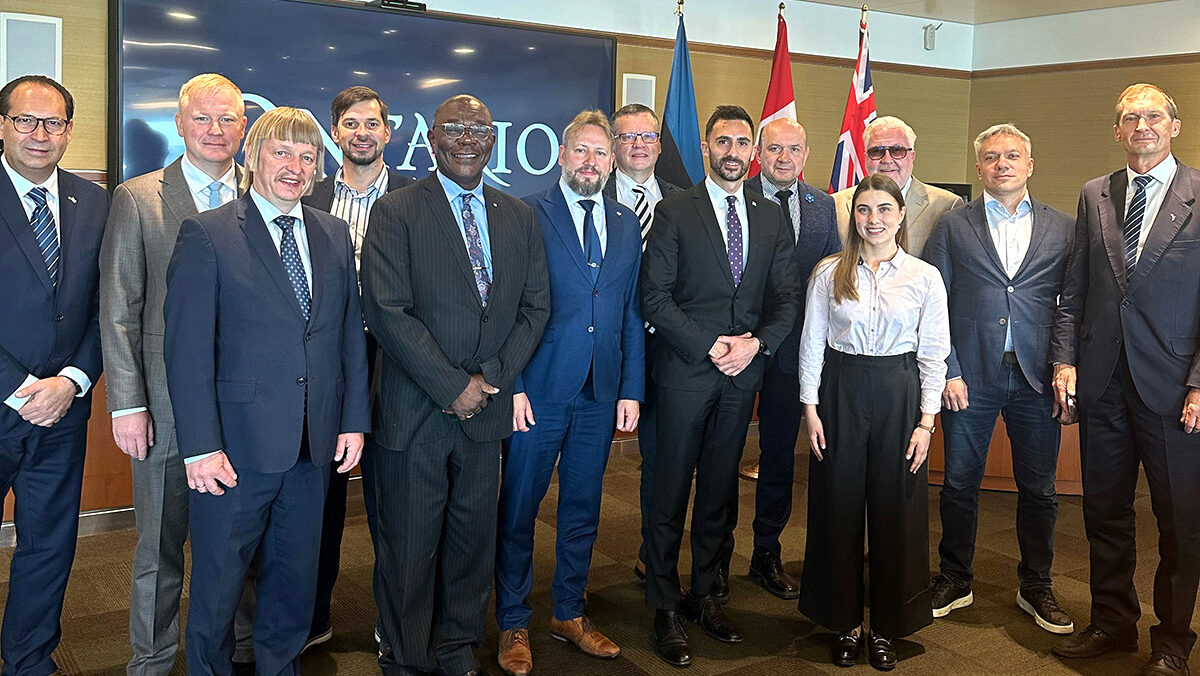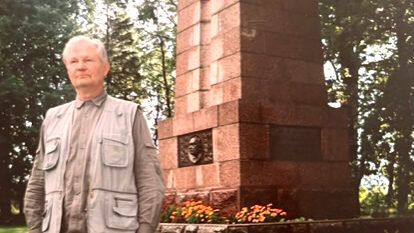It was only after years of unrelenting public demands in the west as well as within the Soviet Union and after the Baltic Way demonstrations of August 1989 insisting that the existence of the secret protocols be acknowledged by the Kremlin, that this policy changed. The first democratically elected Congress of Soviets passed a declaration confirming the existence of the secret protocols, condemning and denouncing them. However, Russia, to this day, increasingly maintains that the pact was a strategic document, motivated primarily by considerations of self-defence.
The Black Ribbon Day movement, initiated in Toronto and led by Markus Hess played the lead role in bringing a wider public understanding of the Pact as a pivotal determinant of the fate of several central and eastern European nations.
The message of the Black Ribbon Day was equally infectious as well as compelling so that by the late 1980's over 50 cities worldwide had created their own Black Ribbon Day committee which organized the crowd-drawing events of August 23rd .
This article suggests that Black Ribbon Day's legacy includes more than the official establishment of the European Day of Remembrance for Victims and Stalinism and Nazism (known in some countries as Black Ribbon Day) in many different countries world-wide.
The collusion between Moscow and Berlin, between Stalin and Hitler, between Communists and Nazis has been mentioned, perhaps a little too casually, usually on the anniversary of the Molotov-Ribbentrop Pact (MRP), for many years. But the powerful significance of it didn't really sink in until the Black Ribbon Day became an international movement. The fact that the Soviet Union and Nazi Germany were equally to blame for the start of the Second World War had never mustered any significant support, had not yet spurred pro-Western activists to a more intensive public awareness and education program.
Although historians and other scholars had studied the significance of co-operation between the Soviet Union and Nazi Germany, till the Black Ribbon Day made an impact on the public, the reality of a Moscow-Berlin collusion didn't enter any substantial open discourse. In fact it might have been heresy to insist that Communist Russia had played an equally culpable role with Nazi Germany in an agreed upon expansion scheme, carving up central and eastern Europe according to a mutual plan – the secret protocols of the 1939 MRP.
One could logically ask why would anyone dare to equate the part played by Nazi Germany, painted as the most odious regime in history, with the Allies' partner, the Soviet Union, who claimed to be the most cruelly suffering victim of Nazi aggression. The Soviet Union took on the responsibility of tying down the German war machine on the eastern front and for that the West was effusively grateful during the conflict, deliberately ignoring the horrendous war crimes and genocide that Moscow was inflicting against millions of captive peoples.
School history programs emphasized the full responsibility that Germany should carry in launching hostilities against Poland in 1939. The invasion of the three Baltic states shortly thereafter became just an historical fact in the study of how WWII developed. The Soviet Union vehemently denied the existence of the secret protocols in the MRP, in spite of the fact that they had been exposed during the Nuremberg trials and had been widely discussed and published by scholars. But they had not yet made a significant impact within the public.
By 1989, the 50th anniversary of the MRP, The Black Ribbon Day campaign had made substantial impact on public awareness worldwide. It reverberated even in Moscow. The Black Ribbon Day actions in the West, MRP related activities in the Baltic states helped to prompt the creation of a 26 member commission by the Congress of People's Deputies to investigate the MRP and its secret protocols.
Alexander Yakovlev, chairman of the commission, who had been the Soviet ambassador to Canada for 17 years, in an interview to Pravda on August 18, admitted that the secret protocols were genuine and denounced them. But he emphasized that they had no impact on the takeover of the Baltic states. Moscow thus reversed its unwavering position that the secret protocols did not exist or were forgeries. (Estonian academician Endel Lipmaa had presented authentic copies of them to authorities in Moscow.)
Even though the MRP foresaw the overtaking of the Baltic states, Moscow continued to insist that the three countries had voluntarily joined the Soviet Union. Anyone suggesting otherwise was immediately labelled a fascist. But people of the Baltic states consistently claimed that they were forcefully and illegally incorporated into the Soviet Union.
In addition to helping to generate a lively public discourse on the actual culprits in launching the Second World War the Black Ribbon Day movement was able motivate more governmental decision-makers and politicians to viewing the Soviet Union as it really was. For those politicians who had been supporters of change in the USSR, simply because it seemed the right thing to do, they now were genuinely committed advocates of democratization in the Soviet Union and freedom for its captive peoples.
(To be continued.)
Laas Leivat




